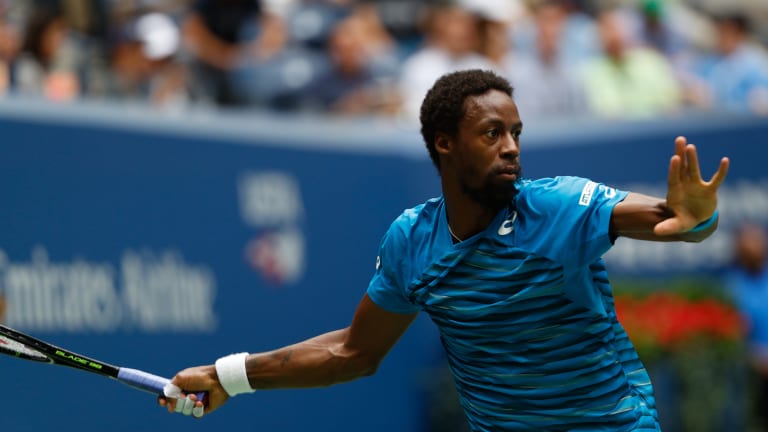NEW YORK—“France is my home,” Gael Monfils told the audience in Arthur Ashe Stadium after his 6-4, 6-3, 6-3 quarterfinal win over Lucas Pouille on Tuesday. “But here is second.”
Monfils has spoken before of his love for New York City. In 2014, when he last reached the quarterfinals at the Open, he talked about his visits with his father to the Bronx, and how much the support of the African-American community there meant to him.
Two years later, Monfils, who turned 30 last week, has made it past the quarterfinals at Flushing Meadows for the first time. It was the capstone to the most consistent season of his career. On Tuesday he cited another African-American as a role model and motivating force for his recent success.
“I’ve been respecting a lot what LeBron James [has done],” Monfils said. “His mindset and the work he put in to win this final, I think is a big inspiration for me.”
Monfils said he would love to pick King James’ brain.
“Got many questions about how he is,” he said, “how he feels, how it is to be the leader, like a great champion playing with him. ‘How do you think about everything?’”
